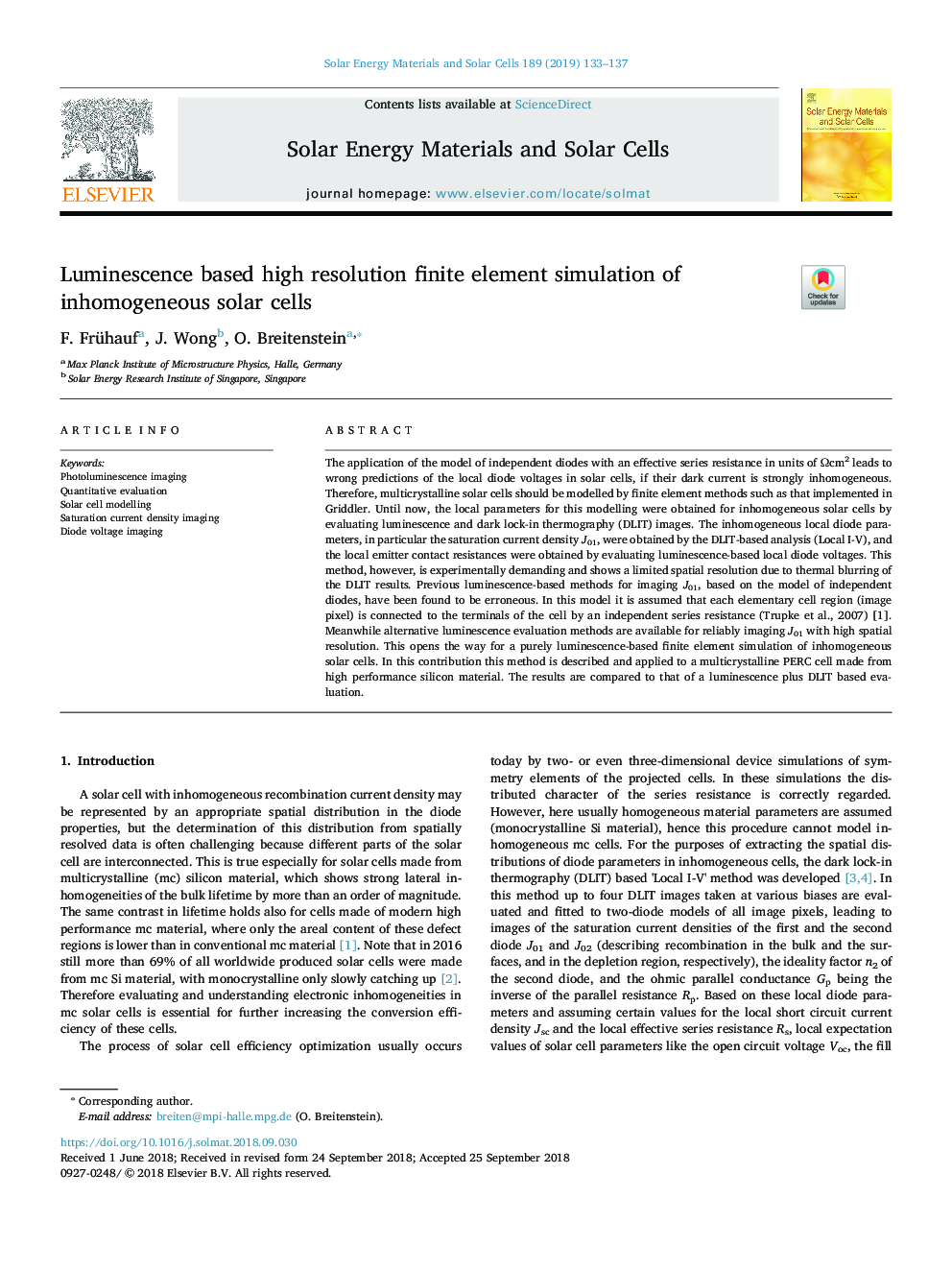| Article ID | Journal | Published Year | Pages | File Type |
|---|---|---|---|---|
| 11001472 | Solar Energy Materials and Solar Cells | 2019 | 5 Pages |
Abstract
The application of the model of independent diodes with an effective series resistance in units of Ωcm2 leads to wrong predictions of the local diode voltages in solar cells, if their dark current is strongly inhomogeneous. Therefore, multicrystalline solar cells should be modelled by finite element methods such as that implemented in Griddler. Until now, the local parameters for this modelling were obtained for inhomogeneous solar cells by evaluating luminescence and dark lock-in thermography (DLIT) images. The inhomogeneous local diode parameters, in particular the saturation current density J01, were obtained by the DLIT-based analysis (Local I-V), and the local emitter contact resistances were obtained by evaluating luminescence-based local diode voltages. This method, however, is experimentally demanding and shows a limited spatial resolution due to thermal blurring of the DLIT results. Previous luminescence-based methods for imaging J01, based on the model of independent diodes, have been found to be erroneous. In this model it is assumed that each elementary cell region (image pixel) is connected to the terminals of the cell by an independent series resistance (Trupke et al., 2007) [1]. Meanwhile alternative luminescence evaluation methods are available for reliably imaging J01 with high spatial resolution. This opens the way for a purely luminescence-based finite element simulation of inhomogeneous solar cells. In this contribution this method is described and applied to a multicrystalline PERC cell made from high performance silicon material. The results are compared to that of a luminescence plus DLIT based evaluation.
Keywords
Related Topics
Physical Sciences and Engineering
Chemical Engineering
Catalysis
Authors
F. Frühauf, J. Wong, O. Breitenstein,
